Nadia Nazarova Content marketing strategy Guide – SEMrush 69 Wow-Score The Wow-Score shows how engaging a blog post is. It is calculated based on the correlation between users’ active reading time, their scrolling speed and the article’s length. Learn more Content marketing strategy Guide – SEMrush
- 110
- 16
- 5
- 14
Until extremely recently in marketing history, when content primarily existed in paper and ink, the process of creating content was simple: all you had to do was write a semi-interesting article and get it printed in the newspaper. There was a downside, though; the lifespan of these articles was short-lived, ending when the newspaper was tossed. There was also no way to know who actually read your article or the impact that it had.
It goes without saying that the world of content has been completely revolutionized thanks to the internet, where it can now live on forever. This helps you keep a store of great content on your site, which is a huge plus, but it means that everyone else is keeping their content too; your competition for user attention is higher than ever before. It’s not just enough to have an interesting idea and write about it; you need to consider your specific audience and make it possible for them to find your content and share it. This is called content strategy.
What is a Content Marketing Strategy?
To fully understand the concept of a concept marketing strategy, we’ll first need to define “content marketing.”
Content marketing is a branch of marketing that works by sharing valuable materials online to attract and build relationships with a brand’s target audience. The emphasis in content marketing should never be to just promote your products like a sales pitch, but instead to offer valuable, actionable content that your audience will respond to.
Content marketing can help foster relationships with new potential customers, but it can also help capture drive leads and sales, establish you and your brand as an industry authority, improve your credibility, and even help your search engine rankings. Types of content that you can use include: blog posts, videos, images, infographics, ebooks, whitepapers, case studies, guides.
An effective content marketing strategy should identify what exact goals you want to reach and how you plan to accomplish them. Do you want more high-value leads? More sales on your e-commerce site, or purchases of a subscription package?
A content marketing strategy should identify what exact goals you want to reach and how you plan to accomplish them.
Instead of just blindly creating content off interesting ideas, a content marketing strategy will allow you to incorporate long-term strategies that are designed to drive the specific, measurable results you’re looking for.
7 steps to create content marketing strategy
A content marketing strategy must be thorough, and while your content should be original and new, creating the actual strategy can—and should— be much more formulaic.
To create an incredible content marketing strategy that can reach your audience and get you the results you want, keep reading. Our 7 step approach to developing a content strategy will help you create stronger content that converts more leads, help you accomplish your goals, and make it easier to find your audiences.
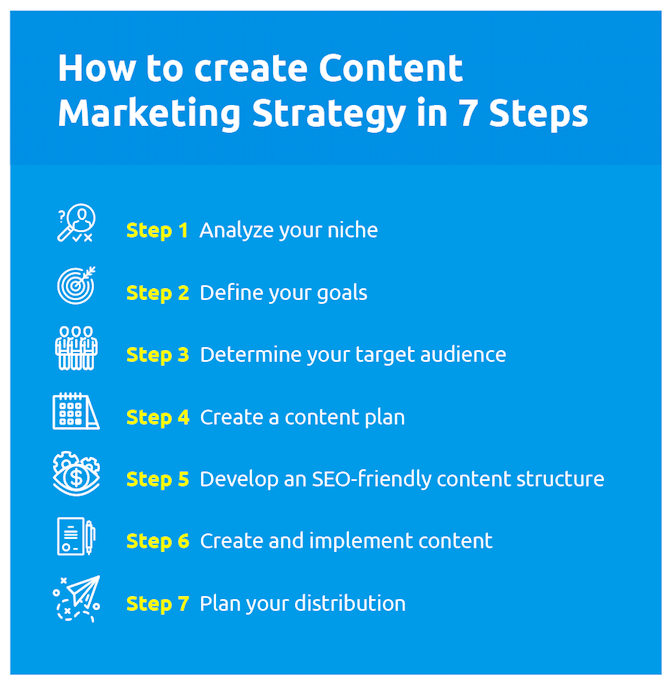
Step 1. Analyze your niche
The first thing you should do is realize where you stand in the niche. It means taking into consideration your strengths and weaknesses, and the value you bring to a specific market. In other words, you should conduct a SWOT analysis.
The SWOT method relies heavily on data, so use your analytics tools and data at full force. Look at factors like bounce rates, new visitors vs. returning visitors, acquisition, and site behavior to detect where there’s potential for improvement. It will help you look realistically at where you are now and where you want to be, helping you bridge the two. By turning weaknesses into strengths, seizing opportunities, and minimizing threads, you can create more valuable content and get it in front of your target audience.
Analyzing your competitor's’ content is essential. On the one hand, their social media profiles can provide useful information about your audience, helping you define which social channels are most popular and discover the most engaging content in your niche.
On the other hand, they help you gain a valuable insight into your competitor’s content strategy. This includes things like how often and what type of content they post, and which social channels they prefer. The SEMrush Social Media tool helps you analyze your own content performance as well as your competitors’. It’s good practice to always compare yourself with your competitors to know where you stand.

Step 2. Define your goals
Your content marketing strategy should be centered around the specific results you want to accomplish. To get those results, you need to set and define very clear goals. Do you want to drive sales for specific products, increase brand awareness, and/or get more leads?
Once you know what your goals are, you must define your KPI or key performance indicators. If you want to generate more leads, for example, you can measure how many new leads signed up for your newsletter each month.
When defining your goals and KPI, always utilize the SMART method. The SMART method requires that your goals be Specific, Measurable, Agreed-Upon, Realistic, and Time-Based. Ultimately, your goals can’t account for much if they can’t be measured; saying “I want my readers to all really love this content” is not a specific goal because there is no end result and you can’t measure it.
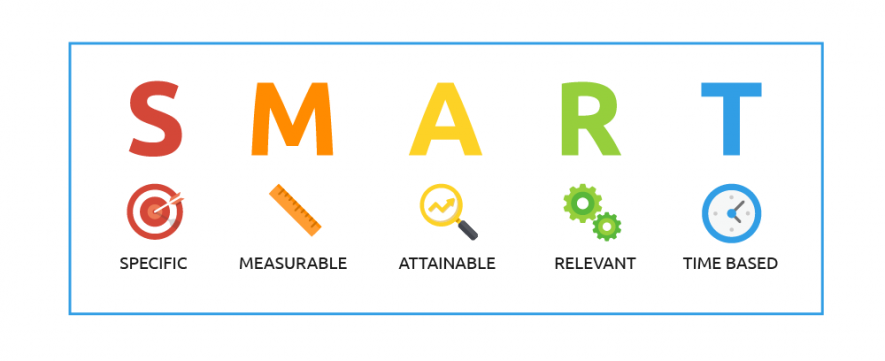
Instead, you could say “I want to increase brand awareness by increasing our social shares by 250% within the next six months.” This is a specific goal (brand awareness) with set measurable metrics (social shares), can be agreed-upon, is realistic (250% in six months could work), and time-based (six months).
You can have multiple goals that you want to incorporate into your content marketing strategy, but you should have a clear plan for how you’ll accomplish each one.
Step 3. Determine your target audience
To reach your goals with content marketing you need to create content for each of your targeted audiences. No matter which business you are in, there will be different audiences you need to reach and each audience will be influenced differently. Creating customer personas is a great way to help break down the type of content each audience will need. Focus on demographics, needs, interests and locations.
Always look to your sales team for ideas on customer personas. They answer the questions people have and they understand the needs of the customers. Use their thoughts for ideation. Also examine your competition’s social media interactions, content development, and community to determine if there is an audience you may have forgotten.
Once you’ve decided who you want to reach, you will also want to take a close look at who you are connected with already. When you do, you can get an idea of who your content resonates with—and who you are missing. If you are missing a major segment of your ideal target audience, you can ask yourself why. You can use Google analytics for that.
Step 4. Create a content plan
In this step, you’ll connect the dots from all the research you have done so far into a tangible plan that is designed to help you accomplish the goals you set in Step 2.
Take a look at what trends are happening online and what your audience is interested in, and see how they merge with your goals. How can you use infographics, blog posts, and YouTube videos to sell more through teaching, for example? In this stage, look at what types of content your audience is already responding to; do they prefer long-form content over blog posts of only 500 words? You should also look at your competitor’s content and see what types of content are getting the most results for them.
Your content plan may take the form of an editorial calendar, taking into account different events (like conferences, sales, and holidays) that will present themselves as opportunities throughout the year. This calendar will allow you to determine how often you want to post ahead of time, and when you want to post. If you notice that your content performs best on Monday and Thursday mornings, for example, you’ll want to make sure you always have content going live then.
An editorial calendar can also help you map out several series of posts, making it easier to see how they’re related and tie in with each other; this makes it easier to optimize for your goals in the process.
Step 5. Develop an SEO-friendly content structure
There’s an extremely telling joke that SEM experts love to tell:
«You can hide a dead body on the third page of Google results, and no one will ever find it».
Unfortunately, this joke is pretty accurate. How many results do you look through when you search for something on Google? Most people don’t even make it through the first page before you find what you’re looking for. If your content isn’t optimized to do well in search engines, the chance that your target audience will find you in their searches is minuscule.

SEO and content marketing go hand in hand, helping one another. SEO can significantly increase the reach and visibility of your content. While social media helps you get to your target audience, the SEO strategy’s goal is to help your pages become visible to those looking for content (and products) similar to yours.
The keywords you choose for your content can help determine where your site lands in the search results, so go beyond the terms that make sense. The words customers use often differ from what a business uses, so always factor in audience knowledge of the topic, interests/needs, the popularity of the keyword, and the keywords used by your competition.
The SEMrush Keyword Magic tool is a great resource to use when researching keywords for your blog and can help you identify your competitor’s best keywords. For best results, you’ll want to strike a balance of keywords that have higher search volumes (meaning users are typing it in more often) and lower competition terms (meaning that other sites aren’t trying to rank for it as much).
After you chose the keywords you want to target with the content, explore SEMrush SEO Content Template . This tool analyzes content on the Google's top 10-ranking pages for your target keywords and gives you a template with recommendations on how to create SEO-friendly content.
For example, for the "content strategy" keyword you can get these recommendations:
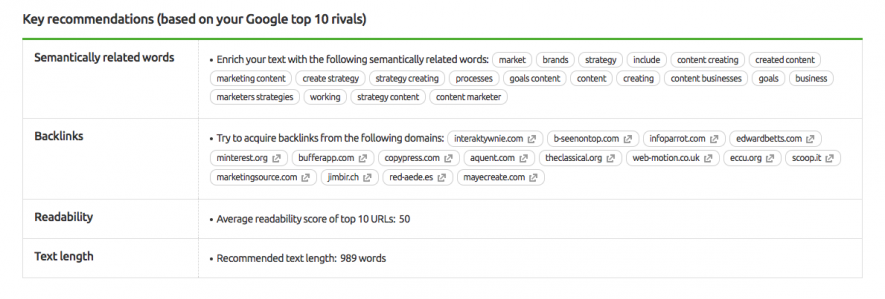
Step 6. Create and implement content
Only at this point in the content marketing strategy—a full six steps in—should you actually get started creating the content.
Your content should all be shaped around the 5 steps that came before this one. It should be created with your audience and relevant keywords in mind (but you should always avoid awkward keyword stuffing).
Your content should also be optimized to achieve whatever goals you are focusing on. If that means sales, you can include brief snippets of product information into your posts. For example, FitBit was writing a blog post about the health benefits of water, they could include a tip about using their smart water bottle, which automatically tells you how much you’re drinking. Great content, after all, is content that helps your business achieve your goals.
Examples of how to do this include:
- Placing social sharing and “Click to Tweet” options on your posts can drive more users to share the post on social media.
- Use CTAs at the end of every piece of content (including videos) to optimize for your goals.
- Place relevant ebooks at the end of a blog post or video and tell users they can “Learn more in our free ebook!” which can be used as a lead magnet.
Creating fantastic content:
- Always write great headlines for all content, which are interesting but still to-the-point and tell users what information they will get when they click.
- Make sure your content covers each topic with enough detail to appear as the most authoritative and informative page/post available. It isn’t about the quantity of words, but the quality.
- Create value. Tutorials and data-driven, informative content provide instant value to your users, increasing the likelihood that they’ll share and come back again.
- Answer questions that your users are asking, whether they’re asking you or in an industry forum. This is a great way to create value quickly.
- Use a combination of different types of media for maximum impact. This includes, text, video, infographics, and images.
To ensure that your content is helping achieve your identified goals use the SEMrush Content tool. Watch what content gets the most views, the most shares, and the most conversions. This can help you create stronger, better-performing content in the future.
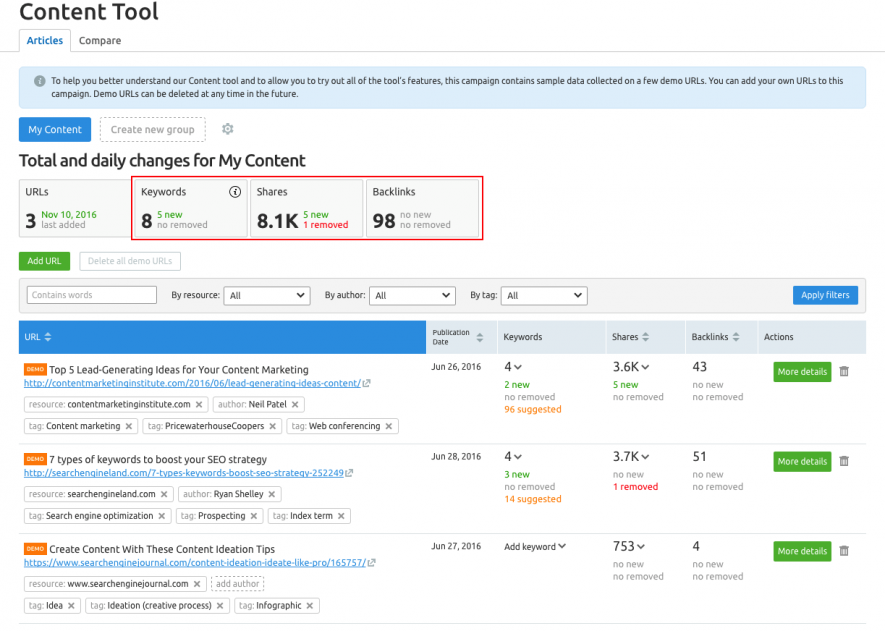
Step 7. Plan your distribution
With more than 2 million blog posts are published every single day, you can’t count on your audience to find it; you need to have a distribution plan so that you can find them.
Your distribution plan will determine how and where you’ll share your content and get it in front of your target audiences. Popular methods of distribution include:
- Social media shares, PPC campaigns, including Facebook Ads, Promoted Pins, and YouTube Ads
- Weekly or monthly email newsletters to subscribers featuring your top content
- Using other distribution and publishing sites, like Medium and LinkedIn posts.
- Use SEMrush Brand monitoring tool to discover media outlets and blogs that are already writing about your brand. Check whether they mention your competitors – it might increase a chance they will want to write about you.
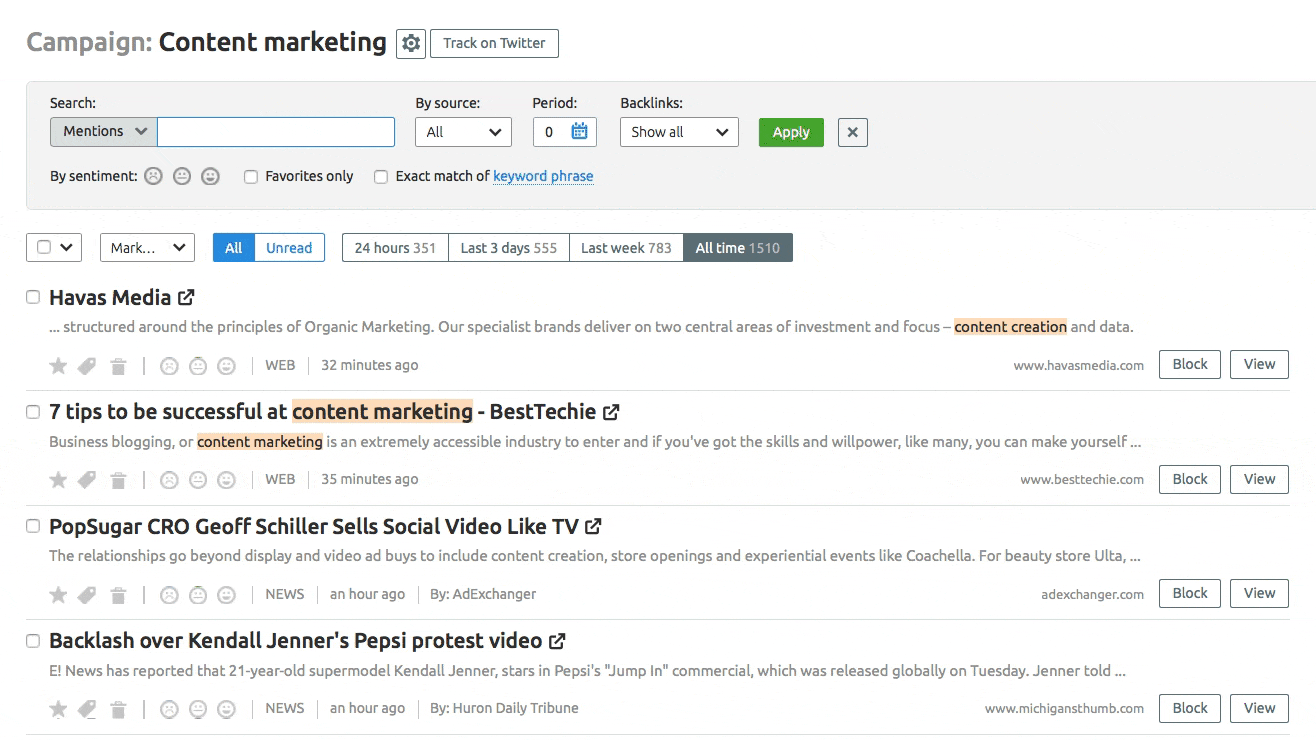
There are different tools available that can make the distribution process more simple. Tools like Buffer or Agorapulse, for example, allow you to schedule social content on multiple networks ahead of time. These tools also make it easy to monitor social mentions and engagement on your posts, so you can evaluate their performance.
You should always use your detailed analytics data, like the data that comes from Google Analytics, to identify and track your most valuable sources of acquisition. Finding out which sites and channels are sending you the most traffic and optimizing for them should be an important part of your content marketing strategy.
Conclusion
If you want to create effective content that meets the needs and goals of your company, a focused, well-developed content marketing strategy is essential to achieving real results.
When executing your content marketing strategy, remember to be patient. Content marketing is a long-term effort, and it will take more time to see results than short-term PPC campaigns that can drive significant action quickly. Evaluate your metrics month-to-month, and if you aren’t seeing consistent changes within six months, reevaluate your strategy to look for strengths, weaknesses, and new opportunities.
Want to learn more about how to perfect your content marketing campaigns?
Stay tuned to read the next article in the series, coming soon!




